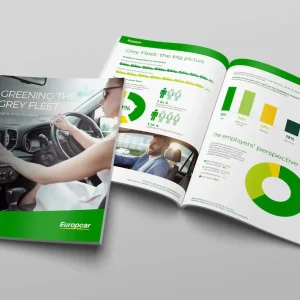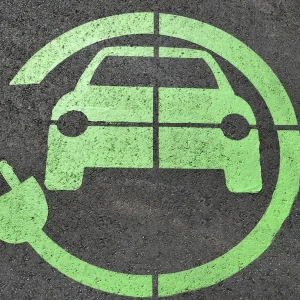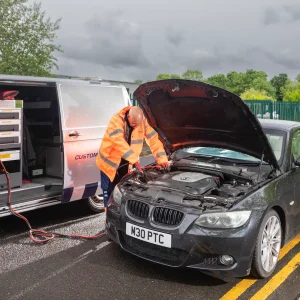The 2030 cut-off for the sale of new petrol and diesel vehicles will be with us in less than seven years, marking a major shift in the future of mobility for both individual motorists and professional fleets.
The benefits of electric vehicles (EVs) over those powered by internal combustion engines (ICE) go beyond their environmental impact. They are significantly less expensive to run: one study shows that EV drivers can save over 56% compared to petrol or diesel per mile. ICE vehicles do have some advantages, including their typical price to buy used or new being lower and how they are much quicker to refuel than EVs. These advantages are diminishing all of the time however, so by the time of the 2030 cut-off there may be very few reasons to keep using ICE vehicles.
The one exception will be heavy goods vehicles – even though advancements are being made all of the time to battery-driven HGVs, it is currently difficult (but not impossible) to use electric HGVs in many applications. For this reason, they have been excluded from the 2030 cut-off.
If you are one of the many companies looking to make the switch to an EV then it will be more complex than replacing each of your ICE vehicles with an EV equivalent. You and the drivers who constitute your fleet will have to adapt to new ways of working and make changes to the way you work.
Starting the process
As mentioned, going electric isn’t as simple as swapping every ICE vehicle for an EV – although it can be. A company that has a small fleet of company cars for salespeople and executives can simply change their existing vehicles to EVs as needed, and provided their drivers have access to home charging there should not be any major changes needed. Fleet managers may want to switch from general fuel cards to those specific to EVs (EV charging cards) so that their drivers could use public charge points, but otherwise day-to-day operations will stay the same.
Other companies will have to do more work to prepare. A company with large numbers of vehicles that see a lot of use – a delivery company for instance – may have to take a look at their operations and make some changes to adapt to the way that EVs differ from ICE vehicles.
For example, EVs still take significantly longer to recharge (on the lower end chargepoints) than their ICE vehicle counterparts do to refuel at a traditional pump. So, while managers could ignore the few minutes spent to top up the petrol or diesel on an ICE vehicle they will have to factor in more time with an EV, especially if they have long routes. This means that it may be necessary to add extra vehicles to compensate for the time spent charging, or it may be necessary to find ways for vehicles to be charged outside of work hours (such as at home or at work) – provided that this will be enough for the vehicles to be able to do their duties during the day.
Charging at home, work and on the road
One of the key aspects of EVs is to manage their charging. Although public charging points are becoming plentiful and are usually much higher power than those that can be installed in homes and many businesses, relying on them is more expensive: charging at home costs around £15,10 for a full charge of a 54kWh battery, while rapid charging will typically cost £19 for a thirty minute charge. Given how home chargers usually cost £1,000 or less it won’t take long for many companies to make their initial investment back through installing their own chargers.
Some companies, principally those larger ones with more on-site space, also consider what charging infrastructure they need at their premises and how they can reduce the cost of this by opening it up to employees and customers. The alternative for smaller companies might be a reduced number of chargepoints on site but the same principle of providing multiple options for their employees.
One other alternative, would be for vehicles to be charged at employee’s homes overnight. Many companies allow their drivers to take their vehicles home overnight to avoid the cost of building and maintaining depots to keep them, and this provides a solution for charging. Home chargers are typically less powerful than their public counterparts, but because they charge overnight when the vehicle isn’t in use, they are often more convenient for drivers and their companies.
It is estimated that only 56% of UK homes can support EV chargers – old-style terraced homes, flats and apartments, rural homes and many others either don’t have space on the street or lack the electrical connections to set up a charger. This will have to change over time, but as it stands around half of your workforce may not be able to use home charging, or installing it might be expensive. Working out how you can enable home charging when every driver in your company has unique personal circumstances will be difficult and will require companies to be flexible and empathetic.
Making the switch
The benefits of EVs are so extensive that there is every reason to transition your company’s fleet now, particularly as technology and infrastructure are improving rapidly in the run up to 2030.
What’s more, as other partners and organisations in your field are likely to be making the same move, and some may already have made the transition, it is important to communicate with them as they may be able to offer valuable solutions that you have not considered yet. There are plenty of experts available who can support you with the physical and digital infrastructure updates and make EV charging as efficient and seamless as possible.
The fleet world is undoubtedly in flux, with many factors impacting how businesses decide to navigate the coming months and years – whether that’s managing a mix fleet or transitioning entirely to EV. What’s for certain is that they need to stay on top of developments so fleet operators and managers can react quickly to changing scenarios and make decisions that will protect their company, staff, and – ultimately – their bottom line.
Paul Holland is managing director for UK fleet at Allstar





